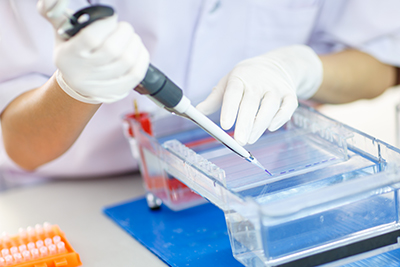| |
|
Introduction

The principles and application of common methods used for
detection and analysis of macromolecular structure, function,
and interaction will be discussed. This course covers biochemical
methods of separation and detection of macromolecules as well
as molecular analysis. Recombinant DNA methods including cloning
and gene expression, DNA sequencing, PCR, mutagenesis and
nucleic acid and protein labeling will covered in this course
including introductory biostatistics.
Course
Objectives
The
goals of the course are: to develop an understanding of: |
 |
-
The
basic methods applied to the study of proteins and
nucleic acids.
-
The
instrumentation used for these methods.
-
The
ways that these methods and techniques are applied
to study of macromolecules, i.e., have some idea
what methods can/should be used to study a particular
problem.
|
Duration
The
course runs for 20 hours over a 6 week session
Course
Lectures:
-
Cloning
and Gene Expression
-
Nucleic
Acid/Hybridization
-
DNA
Sequence Analysis PCR
-
Mutagenesis
-
In
Vitro Mutagenesis
-
Protein-Protein
Interactions
-
Nucleic
Acid-Protein Interactionucleic Acid- Protein Interactiomicroscopy:
-
General/EM
microscopy: confocal/fluoresce
-
Cell
culture
-
Immunology
|
Assessment
There will be one exam at the end of the course involving
recombinant DNA method including cloning and gene expression,
DNA sequencing, PCR, mutagenesis and nucleic acid and protein
labeling.
Admissions
Diploma or higher in a bio-scentific discipline. OR
Technical laboratory experience OR
Non-laboratory based professionals working in the Bioscience
sector |
|
